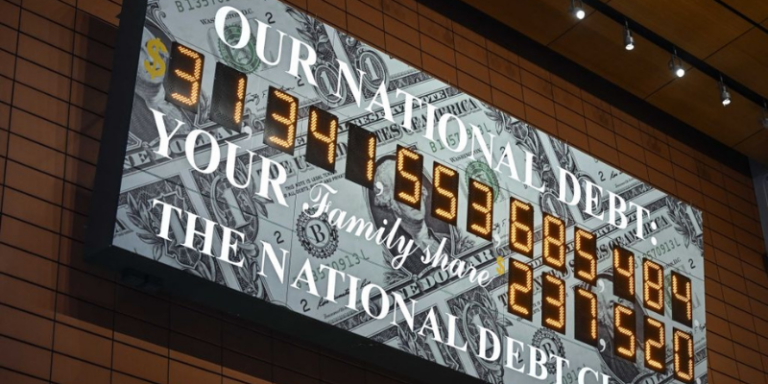National Debt: Will It Continue to Grow?
The national debt is the biggest it has ever been, and it’s only growing bigger.
By: Andrew Moran | December 28, 2019 | 395 Words

(Photo by Fatih Aktas/Anadolu Agency via Getty Images)
You have probably heard by now that the national debt is the biggest it has ever been and that it’s only growing, as each year sees a new record high. But what is the national debt? And why should we be worried?
Spending Out of Control
The national debt, also known as sovereign debt, is the debt owed by the federal government. It is separated into two parts: public and intragovernmental. The former is debt held by the public – citizens, global investors, and foreign governments – in the form of Treasurys, also called bonds. The latter is when the federal government owes other government departments.
To ensure spending keeps going, the Federal Reserve, or the Fed, controls between 10% and 20% of the debt. The Fed does this by buying up bonds and rolling them over. This means that once a bond matures, the Fed uses the money to buy more.
Every time the government spends more than it takes in, creating a budget deficit, it gets added to the national debt. However, if Congress reports a budget surplus, then it is subtracted from the national debt – the last time this happened was in Fiscal Year (FY) 2001.
Debt can indeed play a role in the economy – good and bad. Those who prefer some debt assert that modest increases in the debt can contribute to economic growth. Critics will make the case that the debt takes away capital (money) from the private sector to give it to the public sector, which is known for waste and fraud.
Fast Facts
 The U.S. national debt topped $23 trillion in 2019 as the federal deficit was close to climbing above $1 trillion. It is difficult to quantify, but perhaps it can be done with some frightening examples.
The U.S. national debt topped $23 trillion in 2019 as the federal deficit was close to climbing above $1 trillion. It is difficult to quantify, but perhaps it can be done with some frightening examples.
China and Japan, collectively, own approximately $3 trillion to $4 trillion in Treasurys. Every taxpayer in the U.S. owes roughly $183,000.
It would take more than 700,000 years if the country repaid the debt $1 every second.
The Costs Are Adding Up
To understand just how out of control spending and debt have become, consider this fact: The old New Deal cost Americans $50 billion between 1933 and 1940. The future cost of these same New Deal programs is in the ballpark of $50 trillion (and counting!) when you calculate their expansions, add-ons, and interest.
Can America afford to spend more? The answer depends on your position on the political spectrum.
















